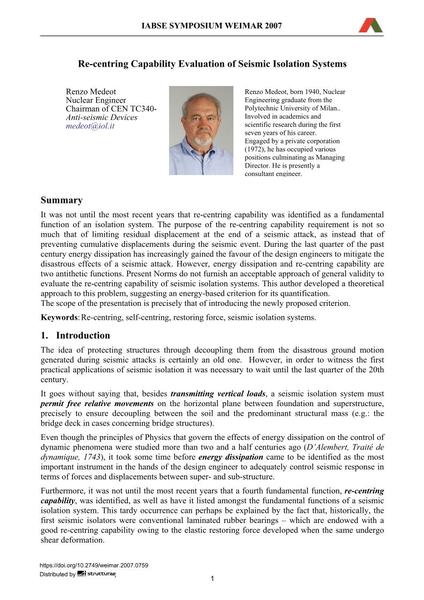Re-centring Capability Evaluation of Seismic Isolation Systems

|
|
|||||||||||
Détails bibliographiques
| Auteur(s): |
Renzo Medeot
|
||||
|---|---|---|---|---|---|
| Médium: | papier de conférence | ||||
| Langue(s): | anglais | ||||
| Conférence: | IABSE Symposium: Improving Infrastructure Worldwide, Weimar, Germany, 19-21 September 2007 | ||||
| Publié dans: | IABSE Symposium Weimar 2007 | ||||
|
|||||
| Page(s): | 518-519 | ||||
| Nombre total de pages (du PDF): | 8 | ||||
| Année: | 2007 | ||||
| DOI: | 10.2749/weimar.2007.0759 | ||||
| Abstrait: |
It was not until the most recent years that re-centring capability was identified as a fundamental function of an isolation system. The purpose of the re-centring capability requirement is not so much that of limiting residual displacement at the end of a seismic attack, as instead that of preventing cumulative displacements during the seismic event. During the last quarter of the past century energy dissipation has increasingly gained the favour of the design engineers to mitigate the disastrous effects of a seismic attack. However, energy dissipation and re-centring capability are two antithetic functions. Present Norms do not furnish an acceptable approach of general validity to evaluate the re-centring capability of seismic isolation systems. This author developed a theoretical approach to this problem, suggesting an energy-based criterion for its quantification. The scope of the presentation is precisely that of introducing the newly proposed criterion. |
||||
